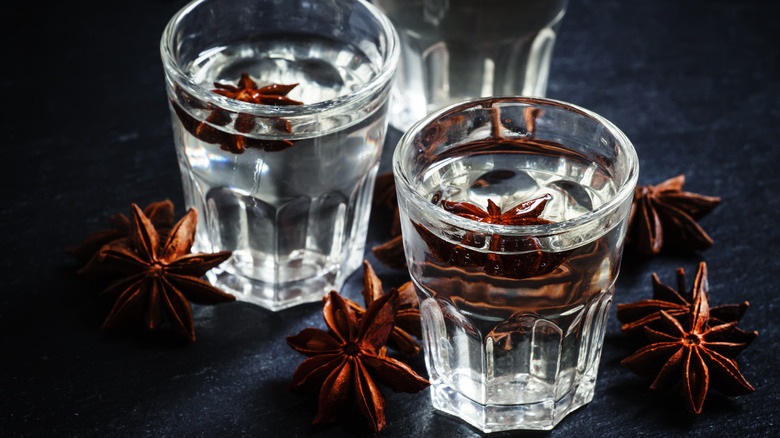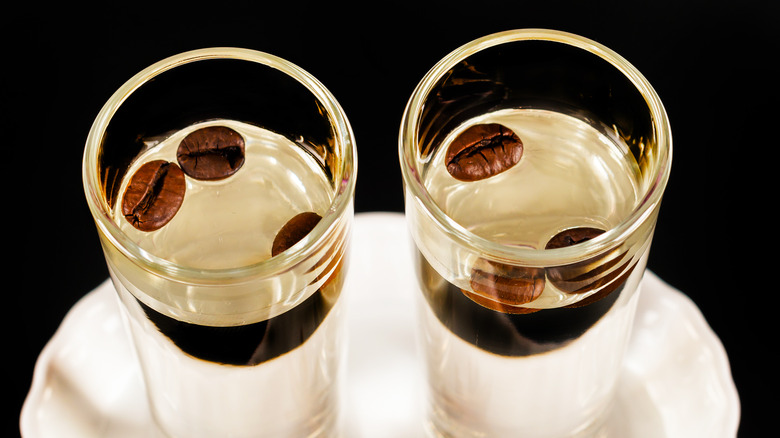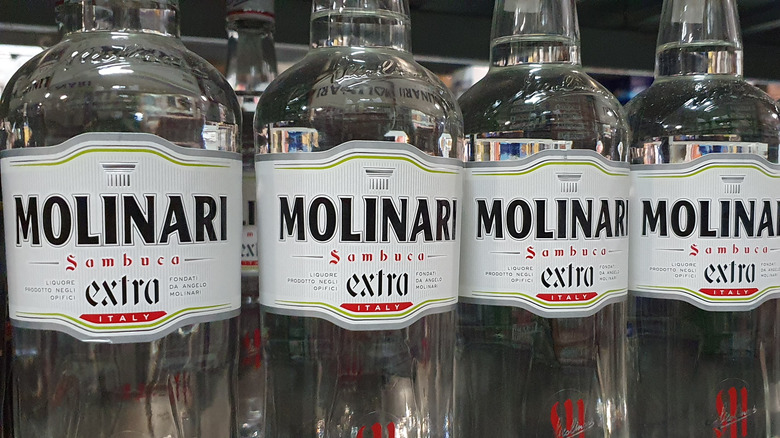What Is The Predominant Flavor In Sambuca?
If you've never tasted sambuca, it's an Italian liqueur that's often used as an after-dinner digestif. Typically enjoyed plain (though it can be mixed into cocktails or even added to espresso), it comes in several varieties. Those include red, green, white, and black, depending on what additional ingredients are added during the distillation process (blood orange, mint, or elderberries). White sambuca is the "classic" and most popular. Sambuca is known for its intense anise flavor; anise is a dried fruit with a number of culinary uses, and its taste is similar to licorice.
Anise is used to flavor many different alcoholic liquors and liqueurs around the world, including Greek ouzo, French pastis, and absinthe. Typically, sambuca is made by distilling the essential oils out from anise fruits, creating a simple syrup from them, and then infusing that syrup into grain- or molasses-based alcohol. The result is a powerfully flavored beverage that can be sipped, taken as a shot, or even used in cooking.
A brief history of sambuca
The etymology of the word "sambuca" is often debated, with some stating that it derives from the Latin word for eldeberry ("sambucus") and others crediting the Arabic word "Zammut," as its origin. It is true that a drink called Zammut, flavored with anise, did come to Italy by way of eastern traders through the port of Civitavecchia in the 1800s.
In 1851, Italy's first commerical version of the product was created by a man named Luigi Manzi. Later, in 1945 and after World War II, a man named Angelo Molinari created another version of the beverage, this time selling it internationally. Molinari Sambuca Extra is still one of the world's best-selling sambuca brands today.
You might see people enjoying shot glasses of sambuca with coffee beans floating at the top. This version of the drink is called "sambuca ghiaccio e mosche," or "sambuca, ice, and flies." The coffee beans represent three good tidings or blessings: happiness, health, and prosperity. Three is an important number in Italy, in part due to its high Christian population; the number three is indicative of the Holy Trinity.
The culinary uses for sambuca
Sambuca can be imbibed in a number of ways, from straight to mixed into cocktails. It works especially well in drinks that require an anise-heavy liqueur, such as Sazeracs. However, it can also be used for cooking and baking.
Shrimp sambuca is a dish that involves flambéing shrimp in a white wine and sambuca sauce, mixed with tomatoes and herbs such as tarragon and chives. Some shrimp sambuca recipes also include a healthy dollop of heavy cream, rendering the finished product a mix of velvety smooth sauce-covered shrimp with a punch of anise flavor.
Sambuca can also be infused into baked goods. Much like rum cake, it can be used to soak slices of pound cake, creating a moist, licorice-flavored dessert served best with whipped cream and berries. It also goes well in cookie batter, especially when paired with complementary chocolate and almond flavors.


